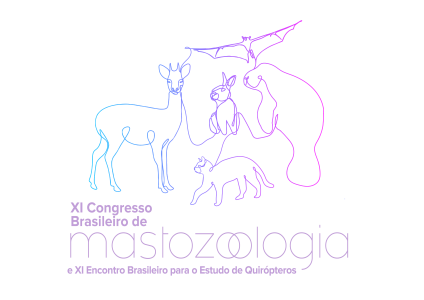Dados do Trabalho
Título:
MORMOOPID BATS FROM BAHIA: NEW RECORDS FOR THE STATE, WITH COMMENTS ON THEIR ECHOLOCATION CALLS
Resumo:
Family Mormoopidae comprises a group of insectivore bats distributed from southwestern United States throughout Central and South America to central and northeastern Brazil and northeastern Bolivia. The current knowledge about the species limits and intraspecific variation within mormoopid species-groups is insufficient, with some geographic areas poorly represented in scientific collections and never included in molecular investigations. Additionally, basic aspects related to the natural history and foraging ecology of these species still lacks, which represent valuable information for completeness of systematic investigations. The echolocation of mormoopids is very distinctive from other Neotropical bat families. They emit non-overlapping multiharmonic pulses that incorporate a constant-frequency component or depend on a central peak frequency on the pulse’s bandwidth. In Brazil, four species of mormoopids are currently recognized, all of them in the genus Pteronotus: P. alitonus, P. rubiginosus, P. gymnonotus and P. personatus. In the state of Bahia, only records of P. gymnonotus have been reported so far, all of them in the Chapada Diamantina region. However, there are still few published studies on the distribution of mormoopids that involve sampling using acoustic data. Thus, the objective of this study is to report the occurrence of P. rubiginosus and P. personatus for the state of Bahia through acoustic data, and to provide details about the echolocation calls of the three species of mormoopids that occur in the state. Bat acoustic sampling was carried out in the municipalities of Barreiras and Bom Jesus da Lapa, western of the Brazilian state of Bahia. Barreiras is in the Cerrado biome, a hotspot for biodiversity conservation which is characterized by a mosaic of several types of savanna vegetation with a high level of endemism, while Bom Jesus da Lapa is mostly in Caatinga, one of the most expressive dry forests in the Neotropical region. Our data point to the syntopic occurrence of these three mormoopids in both municipalities and represent the first occurrence records of P. rubiginosus and P. personatus in the state of Bahia. Most of the records are composed by multiharmonic sounds, being the second harmonic the one with most energy. Our results expand to 107 the number of bat species with confirmed occurrence in Bahia, the most bat species-diverse state in the Northeastern region of Brazil. The mormoopid calls recorded in Bahia show some differences in the parameters when compared to available records from other areas (and biomes) in Brazil. Therefore, our results provide new evidence to previous studies on the geographic variation in the calls of Pteronotus species across the species geographic range.
Financiamento:
Área
Inventário de espécies
Autores
Fábio Falcão, Ana Carolina Pavan
